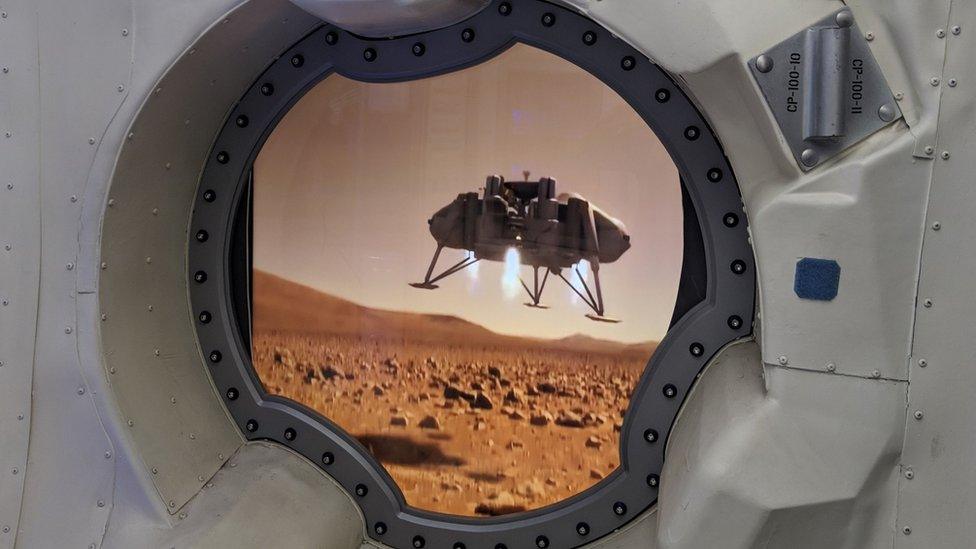Computer servers 'stranded' in space
- Published

Part of the HPE space display at MWC
A pair of Hewlett Packard Enterprise servers sent up to the International Space Station in August 2017 as an experiment have still not come back to Earth, three months after their intended return.
Together they make up the Spaceborne Computer, a Linux system that has supercomputer processing power.
They were sent up to see how durable they would be in space with minimal specialist treatment.
After 530 days, they are still working.
Their return flight was postponed after a Russian rocket failed in October 2018.
HPE senior content architect Adrian Kasbergen said they may return in June 2019 if there is space on a flight but "right now they haven’t got a ticket".
The company is working with Nasa to be "computer-ready" for the first manned Mars flight, estimated to take place in about 2030. The company is also working with Elon Musk’s Space X.
Cooler air
Currently, the 20-year-old machines controlling the ISS return data to Earth for processing. This is possible because it takes less than a second to get the data back.
But on a Mars mission, the time taken for a data round-trip will grow to more than 40 minutes as the planet is millions of miles away. That means the data processing will have to be done on the spaceship.
The three original computers on board the ISS had cost $8m each and taken 10 years to build, Mr Kasbergen told BBC News.
“Our servers cost thousands, rather than millions of dollars,” he added, speaking at the 2019 Mobile World Congress (MWC), in Barcelona, where HPE is displaying a replica model of the ISS Destiny Module.
The Spaceborne Computer is currently embedded in the ceiling of the real thing, Mr Kasbergen said.
While the servers themselves were not modified, they did get a bespoke cooling solution.
The servers were placed in an airtight box with a radiator that is hooked up to the ISS water-cooling system. Hot air from the computers is guided through the radiator to cool down and than circulated back.
Mr Kasbergen said there had been problems with the redundancy power supply as well as some of the redundant solid-state drives.
But he said the failures were handled by the autonomous management software that was part of the experiment.
The devices will need to be inspected back on Earth to find out what went wrong.